The Evolution of Writing - Part I: Manuscript

In the last blog entry, we talked about the history of characters . Now, in the order of our historical series, we will talk about writing and its evolution. From handwriting to typed. It is very interesting to find out how hard it was to write a book in the old days.
Census takers have been a significant part of any publishing process. Imagine how much time it took to rewrite a book, word for word, using ornaments with only simple tools. The old manuscript is so important that even today some computer fonts imitate it. Let's now see how the writing has gone from clay to a beautiful manuscript.
Cuneiform - 3100 BC
Cuneiform is the first writing system to use clay tablets for writing. At the very beginning pictograms were used, then they were replaced by simplified symbols written from left to right. Thus, the initial 1000 characters turned into 400 later. Signs were decoded in the 19th century.
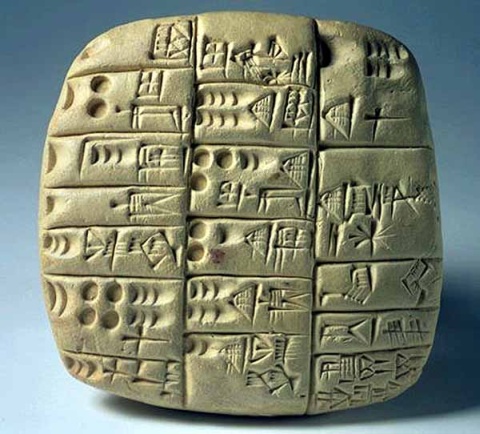
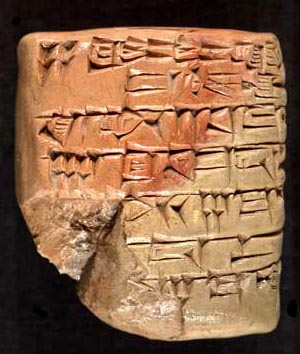
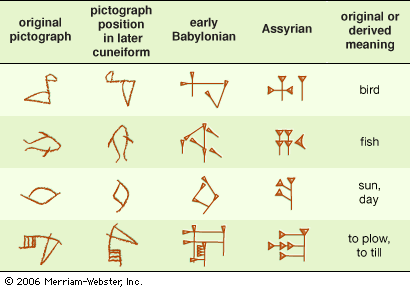
')
Hieroglyphs - 2613-2160 BC
Hieroglyph - means "sacred carving" from the Greek language. Hieroglyphs were widely used by Egyptians in tombs, as a way to connect the dead with the world of the gods. The system of hieroglyphs used rebuses and phonetic symbols, which were recognizable forms, sometimes stylized and simplified.


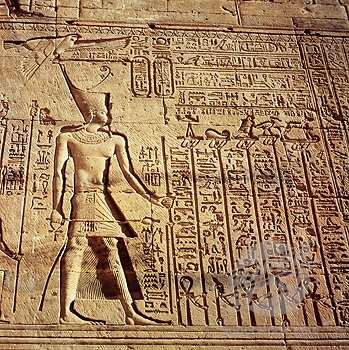
Ancient Greek - fifth century BC
The Greek alphabet was probably inherited from Phoenician with some modifications. The first known Greek entry was made in 1400 BC, which makes this language one of the oldest existing in our time. Greek symbols are used today in other languages and fields like mathematics, astronomy, philosophy, and others.

Roman carving - second century BC
Like the Greek alphabet, the ancient Roman had no serifs and was presented in a simple form (simple trace). The words were separated by dots.

Classical Roman carving - the first century AD
Finally, serifs were born. There is a theory that serifs were originally introduced as a technical component of the font so that the stone is less prone to splitting at the ends of characters. Below are the famous Trajan inscriptions from 113 AD.

Roman capital - first century AD
They were a transfer of symbols used in the thread with all the inherent characteristics.


Uncial writing - fifth century AD
Uncial writing is characterized by simple and rounded strokes using only uppercase characters. This letter was widely distributed in Christian and other written works.
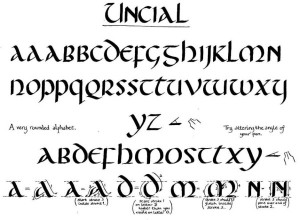
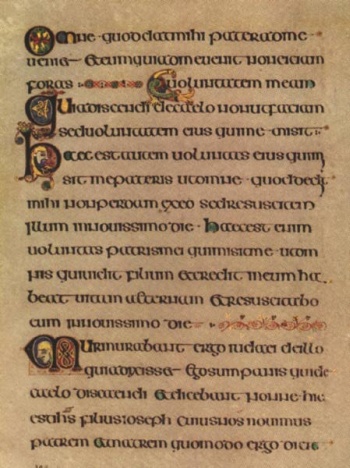
Semi-Special Letter - 6th Century AD
This was the first use of minuscule characters (inherited from the “minuscule” - a lowercase letter in medieval manuscripts), inherited from Roman italics, using four lines (four guidelines), upper and lower drawing elements.

Korolinga Minusk - 8th century AD (789-1100)
The Koroling ministral is an evolution of the semi-ethnic letter that was used in the empire of Charlemagne as a universal letter that was recognizable in many regions of the kingdom. Compared to its predecessor, this letter was more legible and consistent.
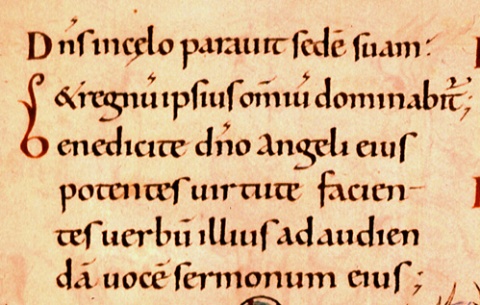
Gothic writing - 12-15 centuries
With the death of the empire of Charlemagne, a new narrower and heavier calligraphy was born, also known as Gothic writing or Gothic miniscule. With the increase in the number of educational institutions, this letter became widespread, and not only in Christian works. Gothic writing had four basic styles: texture (textura), rotunda (rotunda), bastarda, and cursive.

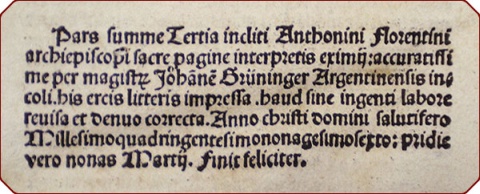

Renaissance - Lettera Antiqua
At this time, two forms of symbols were revived, based on the ancient Roman model: Lettera Antiqua formata (formal) and Lettera Antiqua corsiva (informal).

Publications "The universal penman" - 1741
The next mark in the history of writing and calligraphy was the publication of George Bickham, who collected the best recipes of 24 great calligraphers of the time. The book, written in a calligraphic style (Copperplate style), contained 275 recipes for the characters, 19 complete alphabets and many beautiful ornaments. Parts of the publications have been merged and are being sold in this general form even today.
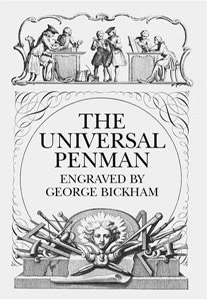

Today, if you look at the fonts installed in your computer, you will find there are many fonts based on an antique manuscript. In the second part of this article, we will look at the transition from handwritten to print and how it affected society. See you, for now you can find more information on the following links:
- Design history
- Textism
- Blackletter
- German Plaza - The Universal Penman
- Roman script / lettera antica
- Trajan's column
Source: https://habr.com/ru/post/67630/
All Articles